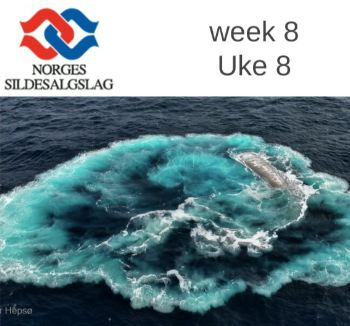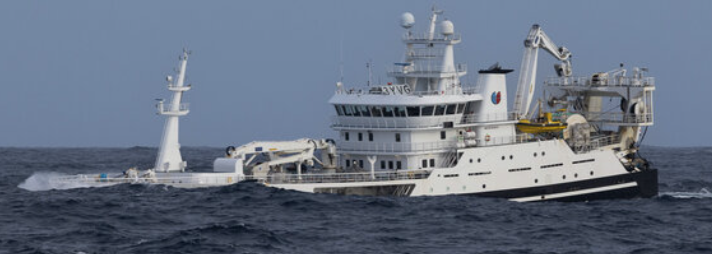|

Photo: Norges Sildesalgslag/FIS
The Norwegian Pelagic Fishing Course in Week 8
 NORWAY
NORWAY
Tuesday, February 27, 2024, 06:50 (GMT + 9)
Capelin fishing in the Barents Sea.Blue whiting from the west and some herring in the north.
Blue whiting:
(1).png)
It was an average week at Blue Whiting where a total of 35,200 tonnes were registered. This is distributed among 22 different boats with catches ranging from 170 t as the lowest to 3,150 t as the largest catch.
The reason why there was not a larger quantity is that in the latter part of the week, there has been stormy weather which has prevented the boats from fishing. This is illustrated by the fact that in the first part of the week, 30,800 t of the week's quota was fished.
The main part of the Blue Whiting fishing has taken place outside 200 n.miles west of Ireland. Only 4,500 t have been fished northwest of the Porcupine bank in the EU zone.

Photo: Norges Sildesalgslag
The fishermen report a lot of Blue Whiting on both fields and one experiences full Blue Whiting sacks in a short tow time.
We are now over halfway done, as just under 200,000 t of the year's quota of 390,000 t have been fished. It has been adventurous fishing since the first catch from international waters came on 23 January. With a few days left in February, it shows a quantity of 178,000 t this month, and we have to go back to the year 2006 to find a larger February quantity when 220,000 t were fished.
We still expect good participation in the Blue Whiting fishing in the west, even though just under 10 boats have finished this year's quota.
NVG herring:
.png)
As expected, there was a modest quantity from herring fishing in the north with a total of 8,100 tonnes. It is the foreign boats that have contributed the most with 4,500 t, trawls and purse seines with 1,700 t each and coastal with 200 t.
The fishing has taken place in the area from the north-west of Andenes and further south to the west of Værøy as the southernmost catch. It is mainly the 2016 class, with average weights of around 290 grams, that have been fished for.
For the large herring that comes in from the Norwegian Sea, with sizes of up to 330 grams, the fishermen report modest registrations and deep herring that are difficult to catch. Only a few catches have been taken with that herring.
92,200 t of the Norwegian quota of 255,847 t have now been fished. And as expected, due to the quota reduction, it is significantly lower than last year when Norwegian boats fished just under 160,000 t.
In the coming week, we expect modest quantities of NVG herring.
Capelin:
.png)
At that time, lode fishing in the Barents Sea was underway, and 1,700 tonnes were registered from the boats "Gerda Marie" and "Vikingbank". Lodda is fished with seine just under 40 n.miles north of Ingøy.
The combined sizes are in the range of 57-59 pcs/kg. This is somewhat smaller than the start-up last year when the sizes were just under 50 pieces/kg together.
The roe percentage is reported from the boats to be up to 17%. Samples taken at the start of the unloading of one boat show something higher, with a roe content of close to 20%.
It is expected that more boats will now set course for capelin fishing since it has come far enough on the road to be at the end of February.
Author/ Source: Roar Kenneth Garvik / Norges Sildesalgslag (translated from original in Norwegian)
[email protected]
www.seafood.media
|



